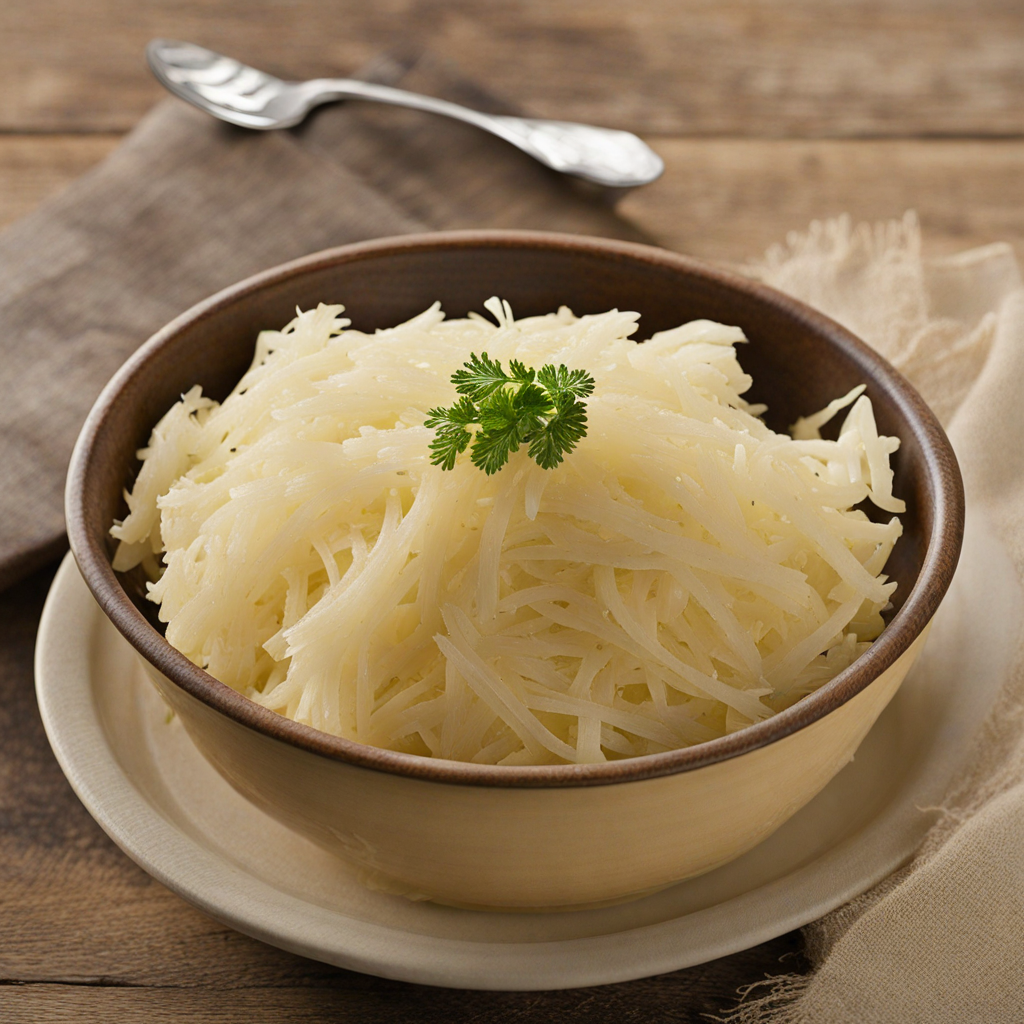Capuns
Capuns is a traditional dish from the small principality of Liechtenstein, often celebrated for its unique blend of flavors and textures. This hearty meal consists primarily of Swiss chard leaves wrapped around a filling made from a mixture of meat, typically minced pork or beef, and a binding agent such as flour or bread. The dish reflects the culinary traditions of the region and showcases the use of locally sourced ingredients, making it a quintessential representation of Liechtenstein's rustic cuisine. The origins of Capuns can be traced back to the 19th century, where it likely emerged as a peasant dish. Its roots are deeply intertwined with the agricultural practices of the region, where farmers relied on the bounty of their lands to create satisfying meals. Capuns was initially a way to utilize leftover meat and vegetables, transforming them into a dish that was both economical and nourishing. Over time, the dish has evolved, with variations appearing in neighboring Swiss and Austrian cuisines, but the traditional Capuns remains a staple in Liechtenstein, often served during special occasions and family gatherings. The flavor profile of Capuns is a delightful combination of savory and earthy notes, with the Swiss chard providing a slight bitterness that balances the richness of the meat filling. The dish is often seasoned with spices such as nutmeg, pepper, and salt, enhancing the overall taste and adding depth. When cooked, the chard leaves become tender while retaining a subtle texture, allowing them to envelop the filling perfectly. This results in a dish
How It Became This Dish
Capuns: The Culinary Identity of Liechtenstein Nestled between Switzerland and Austria, the small Alpine principality of Liechtenstein boasts a rich cultural tapestry influenced by its geographical location and historical ties. Among its culinary treasures is Capuns, a dish that embodies the spirit of this tiny nation. With roots steeped in tradition and an evolving identity, Capuns is more than just a meal; it represents the heart of Liechtenstein's cultural heritage. Origins: A Culinary Tradition Capuns is believed to have originated in the mountainous regions surrounding the Rhine Valley, with its name deriving from the local dialect of the Romansh language, meaning "bundles." This dish consists of Swiss chard or other leafy greens wrapped around a filling of spiced meat, often pork, mixed with rice or bread. The history of Capuns can be traced back to the simple, resourceful cooking methods of rural communities that sought to utilize available ingredients in innovative ways. The origins of Capuns can also be linked to the broader Alpine culinary tradition, where similar wrapped dishes are found across the region. Its development reflects the agricultural practices of the area, where farmers would use the abundant greens from their gardens to create hearty meals. The use of leafy vegetables as wrappers is a practical adaptation to the alpine environment, where preservation of food was essential for survival during harsh winters. Cultural Significance Capuns is more than a staple dish; it holds significant cultural importance in Liechtenstein. It is often prepared during family gatherings, celebrations, and special occasions, symbolizing communal bonds and the sharing of traditions. The process of making Capuns is typically a collective effort, bringing families and friends together in the kitchen. In this way, it serves as a culinary ritual that strengthens social ties and preserves heritage. Moreover, Capuns reflects the principles of sustainability and resourcefulness that have long characterized rural life in Liechtenstein. Historically, the dish would have been made with whatever ingredients were available, allowing families to make the most of their resources. This adaptability is a testament to the ingenuity of Liechtenstein's culinary practices, where nothing goes to waste, and every meal tells a story. Development Over Time As the culinary landscape evolved, so did Capuns. Throughout the 20th century, the dish underwent various transformations, influenced by modern cooking techniques and changing dietary preferences. While traditional recipes typically featured pork, contemporary versions have expanded to include alternative meats, as well as vegetarian and vegan adaptations. This flexibility has allowed Capuns to remain relevant in a world increasingly focused on inclusivity and health-conscious eating. In recent years, there has been a resurgence of interest in traditional foods, spurred by a broader movement toward local and sustainable agriculture. Chefs in Liechtenstein have taken a renewed interest in Capuns, often experimenting with different fillings and flavor profiles while still respecting the essence of the original dish. This revival has not only preserved the traditional recipe but also redefined it, making it accessible to younger generations. Moreover, Capuns has gained recognition beyond Liechtenstein's borders. As the principality seeks to promote its unique culinary identity, local chefs have embraced the opportunity to showcase this dish at international food festivals and culinary competitions. Through these events, Capuns has been elevated to a symbol of Liechtenstein's rich cultural heritage, gaining appreciation from food enthusiasts worldwide. The Modern Capuns Experience Today, Capuns is often served in restaurants across Liechtenstein, where diners can enjoy both classic and innovative interpretations of the dish. Traditional preparations may include a hearty sauce, often made from cream or broth, which enhances the flavors of the wrapped greens and filling. Modern variations might incorporate seasonal ingredients, such as wild mushrooms or local cheeses, showcasing the culinary versatility of Capuns. In addition to its presence in restaurants, Capuns has become a staple at local fairs and markets, where food stalls offer freshly prepared servings. This accessibility has helped cement Capuns as a beloved comfort food among the people of Liechtenstein, bridging the gap between the old and the new. The dish is often accompanied by local beverages, such as wines from the nearby Rhine Valley, further enhancing the dining experience. The pairing of Capuns with these regional drinks not only elevates the meal but also fosters a deeper appreciation for the agricultural bounty of the area. A Culinary Heritage for the Future As Liechtenstein continues to navigate the complexities of modern life, Capuns stands as a testament to the enduring power of food in shaping cultural identity. Its rich flavors and communal preparation practices offer a glimpse into the past while also serving as a canvas for innovation. The dish reflects the principles of sustainability and resourcefulness that are increasingly relevant in today's world, serving as a bridge between tradition and modernity. In educational settings, Capuns is often used to introduce students to the cultural heritage of Liechtenstein. Cooking classes and workshops that focus on this dish not only impart culinary skills but also instill a sense of pride in local traditions. By engaging younger generations in the preparation of Capuns, the future of this dish—and the cultural narratives it carries—seems secure. In conclusion, Capuns is more than just a dish; it is a symbol of Liechtenstein’s cultural identity, a testament to the resourcefulness of its people, and a celebration of the rich agricultural heritage of the region. As it continues to evolve, Capuns will undoubtedly remain a cherished part of Liechtenstein's culinary landscape, binding the past to the present and ensuring that this delicious tradition endures for generations to come.
You may like
Discover local flavors from Liechtenstein







